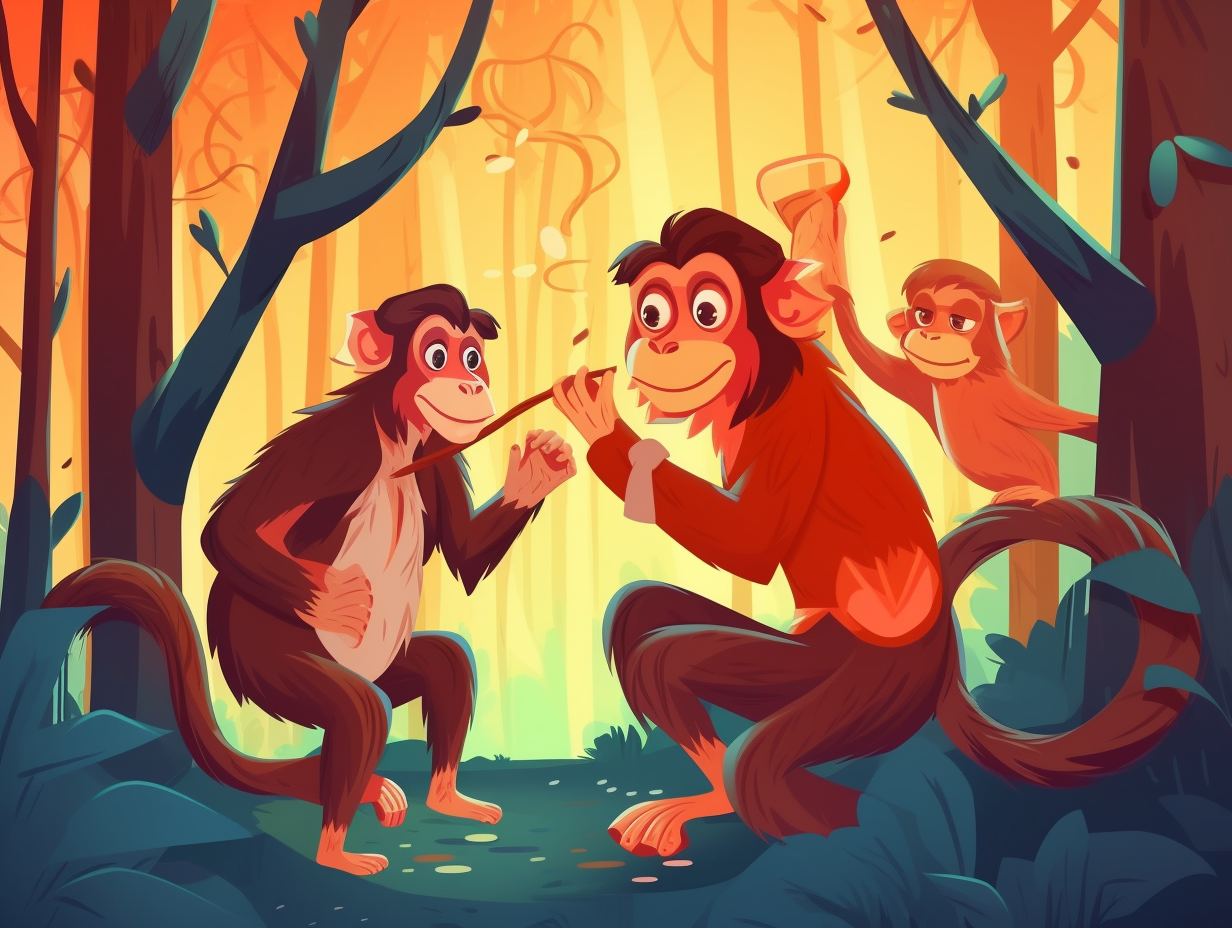Discover the Wild Side: Top 13 Amazing and Entertaining Monkey Fun Facts You'll Love!

1. Not All Tails Can Swing
Monkeying around with tails: While many might assume that all monkeys are endowed with the superpower to effortlessly swing through trees like Tarzan's trusty sidekick, the truth is that not all monkeys have prehensile tails. The hard-to-remember Hamadryas baboons sport short tufted tails that can't grip or grasp objects with their furry little ends.
Source => animals.sandiegozoo.org
2. Monkey Dental Floss
Move over, Mr. Bean, there's a new dentistry aficionado in town: Long-tailed macaques on the Indian island of Great Nicobar have been observed using feathers, grass blades, and even metal wires as dental floss to remove food debris from between their teeth, as reported in the journal Primates.
Source => dailymail.co.uk

Did you know chimpanzees have a preferred hand for "termite-fishing" just like humans, and it's even heritable? Discover the 5 million-year-old origins of this fascinating trait! 🐵🎣
=> Fun Facts about Primates
3. Monkey Socialization Differences
Hey, ever wonder why your boy monkeys seem less like "curious George" and more like "roughhousing Ralph?" Well, it's all in their monkey business: Male and female primates undergo different socialization experiences from infancy, with males engaging in physical play on the troop's outskirts, while females learn parenting skills and establish social connections in safer areas from their mothers and older female relatives.
Source => palomar.edu
4. Chimps: Our DNA Relatives
When it comes to family reunions, we might be sharing more than just a banana pudding with our primate pals: humans and chimpanzees astonishingly share 98.8% of their DNA, making them our close relatives who descended from a single species millions of years ago.
Source => amnh.org

5. Macaque Tool-Making Skills
Talk about a monkey wrench in history: Long-tailed macaques in Thailand use stones as hammers and anvils to crack nuts, accidentally creating sharp rock flakes that closely resemble early human cutting tools, shedding new light on our assumptions about tool-making evolution.
Source => npr.org
6. Vervet Monkey Alarm Calls
Vervet monkeys have an alarm system that rivals Medusa's, bestowing mythical powers on their fellow primates without drawing a single snake: they employ distinct alarm calls to communicate the presence of different predator classes, enabling fellow tribe members to effectively dodge danger even without seeing the predator, thanks to their uncanny pre-human semantic calls.
Source => nature.com
7. Monkeys' Natural Remedies
Monkeying around with healthcare: White-faced capuchin monkeys use piper plant leaves as a natural insect repellent and antiseptic, while tamarins swallow large seeds to dislodge intestinal worms, bonnet macaques and rhesus macaques eat dirt containing kaolin minerals for diarrhea relief, and red colobus monkeys munch on charcoal to absorb cyanide and soothe indigestion, passing down these natural remedy practices through generations.
Source => pbs.org
8. From Monkey Helpers to Robotics
Hang up the bananas, and pass the robotic arms: Helping Hands: Monkey Helpers has stopped training capuchin monkeys to lend a paw to those with spinal cord injuries or mobility impairments. In their quest for assistance evolution, they're now focusing on the future - developing robotic arms, exoskeletons, adaptive wheelchairs, and smart home technologies that will revolutionize the lives of people with physical disabilities.
Source => monkeyhelpers.org
9. Orangutan Rain Protection
Even orangutans can't resist playing "Singing in the Rain": they use large caladium leaves and discarded plastic bags as impromptu rain hats and umbrellas during downpours, especially in Mount Leuser National Park, Indonesia.
Source => dailymail.co.uk

10. Capuchin Monkeys Demand Equal Rewards
Whoever said "monkey see, monkey do" never had to split a banana with a brown capuchin monkey: These clever primates get quite miffed when they see their partner getting a better reward for the same amount of effort, making them natural champions for equal pay in the jungle.
Source => pnas.org
11. Monkey Mirror Neurons
Monkey see, monkey do? More like monkey feel, monkey understand: Monkeys possess mirror neurons, which not only allow them to imitate actions they observe, but also play a role in intention understanding, emotions, empathy, and potentially the evolution of language. Talk about a simian sensation!
Source => ncbi.nlm.nih.gov
12. Macaques: The Monkey Thieves
Monkeying around with commerce: Adult long-tailed macaque monkeys in Bali, Indonesia have been observed stealing valuable items from tourists and negotiating food rewards in exchange for the stolen goods, showcasing an understanding of a token economy and a preference for higher-value items.
Source => cnn.com
13. Japanese Macaques' Deer Attraction
Talk about an odd couple: it's like the Romeo and Juliet of the animal kingdom, only furrier and with a bit more tail-swinging. Ladies and gentlemen, we give you the male Japanese macaque and the female Sika deer: he's a monkey with a passion for her, mounts her in a daring display of attraction, then chases away any would-be competitors for her affection – all while never getting aggressive with his lovely doe! But seriously: during the breeding season, Japanese macaques have been observed attempting to copulate with Sika deer, driven by hormonal surges and their close interactions in the wild, resulting in this wild and unusual sexual behavior.
Source => springer.com
Related Fun Facts




















